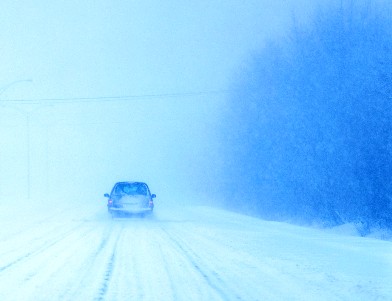
In anticipation of a cold winter, a simple guide to preparing cars for winter has been produced by the Environmental Transport Association (ETA).
The cold snap predicted by weather forecasters for October may not have materialised, but the prolonged low temperatures of the last two winters means it is wise to prepare cars for winter now.
The most popular advice seems to be ‘do not travel’, but if staying at home is not an option, drivers need to use common sense and prepare for the possibility that they may become stranded or their car may suffer a breakdown.
Preparing your car for winter
| Antifreeze | During the winter you use more windscreen wiper fluid so make sure that you have anti-freeze or windscreen washer fluid anti-freeze mix, in your car’s water bottle. You don’t want to find yourself stuck behind a lorry trying to clean your windows only to find your washer liquid has frozen |
| Survival kit | Stow a winter driving Survival Kit in your boot. Include a torch, ice scraper, windscreen de-icer, starter cables, a folding shovel and some non-perishable food, a blanket and a tow rope. |
| Tyres | Checking the condition of your tyres is important throughout the year but when there’s snow and ice on the road it’s vital. When checking your tyres first make sure that the tyre treads are the correct depth – ideally more than 3mm for winter. Secondly make sure that the tyres are inflated correctly, as the cold weather can lower tyre pressure. Don’t be tempted to let some air out to get more grip as this doesn’t work, and can seriously reduce stability. |
| Electrics | Car batteries can be past their best after 5 years, so if your battery is older than this get it checked by your local garage. |
| Petrol | Keep your fuel tank topped up in the winter as you never know when you’re going to need that extra fuel. If you are driving and become snowed in, conserve your fuel. Run your engine every twenty minutes to warm the car. |
Winter driving tips
If you must travel in the icy conditions, the following tips and equipment can help you avoid getting stuck in the first place.
Best winter driving tips
* Fitting snow chains to your car’s tyres will enable you to continue your journey should you be caught in snow. You need to remove them when road conditions improve, but they are a wise investment.
- In slippery conditions avoid sudden acceleration and braking – driving as smoothly as possible will make it less likely that you slide and return better fuel economy, too. If you start to skid, gently lift your foot off the accelerator and steer into the slide.
- Keep an ‘emergency bag’ in your boot containing two blankets, a bottle of water and some non-perishable, high-energy food.
- Ensure your mobile phone is fully charged and that the number of your breakdown recovery service is stored in the memory.
- It’s important you can see and be seen so take time to remove any snow and ice from your vehicle’s windows, headlights, brake lights and indicators.
- Your car may be fitted with Electronic stability control (ESC) – a gizmo fitted to some modern cars that in the event of a skid automatically applies the brakes to individual wheels. However, you may find that ESC hinders your progress up a snow-covered incline.
- Try to keep a shovel in your car so that you can dig yourself out of trouble.
- Breakdown cover costs from just £24 – ensure you have cover in place
- Listen to local weather forecasts as road conditions can change fast. If you find yourself stranded in your car in snowy conditions, call for assistance and unless you are at risk of being struck by other vehicles, stay where you are.
- Do not use cruise control in snowy or icy conditions | |
0 Comments View now